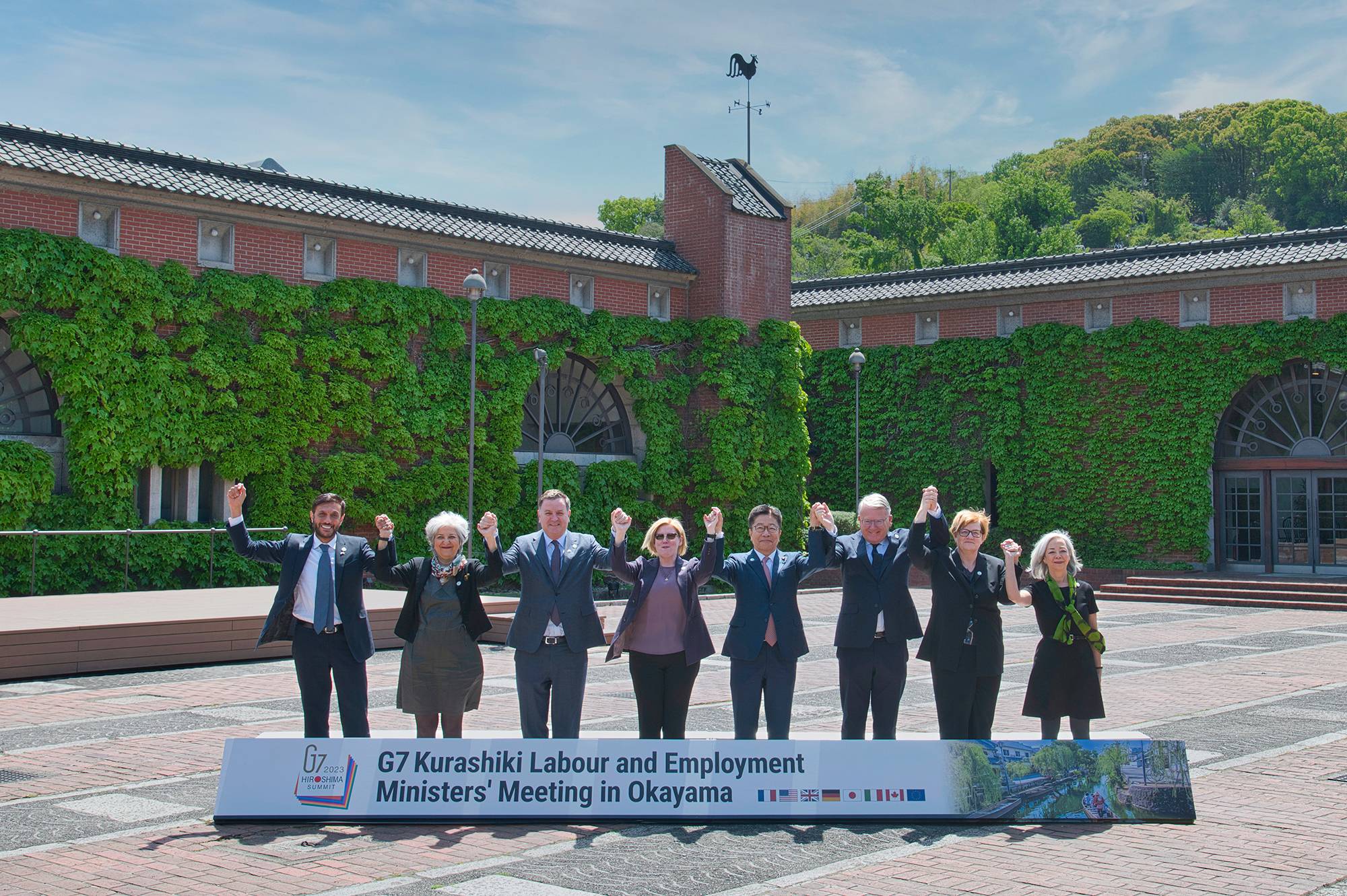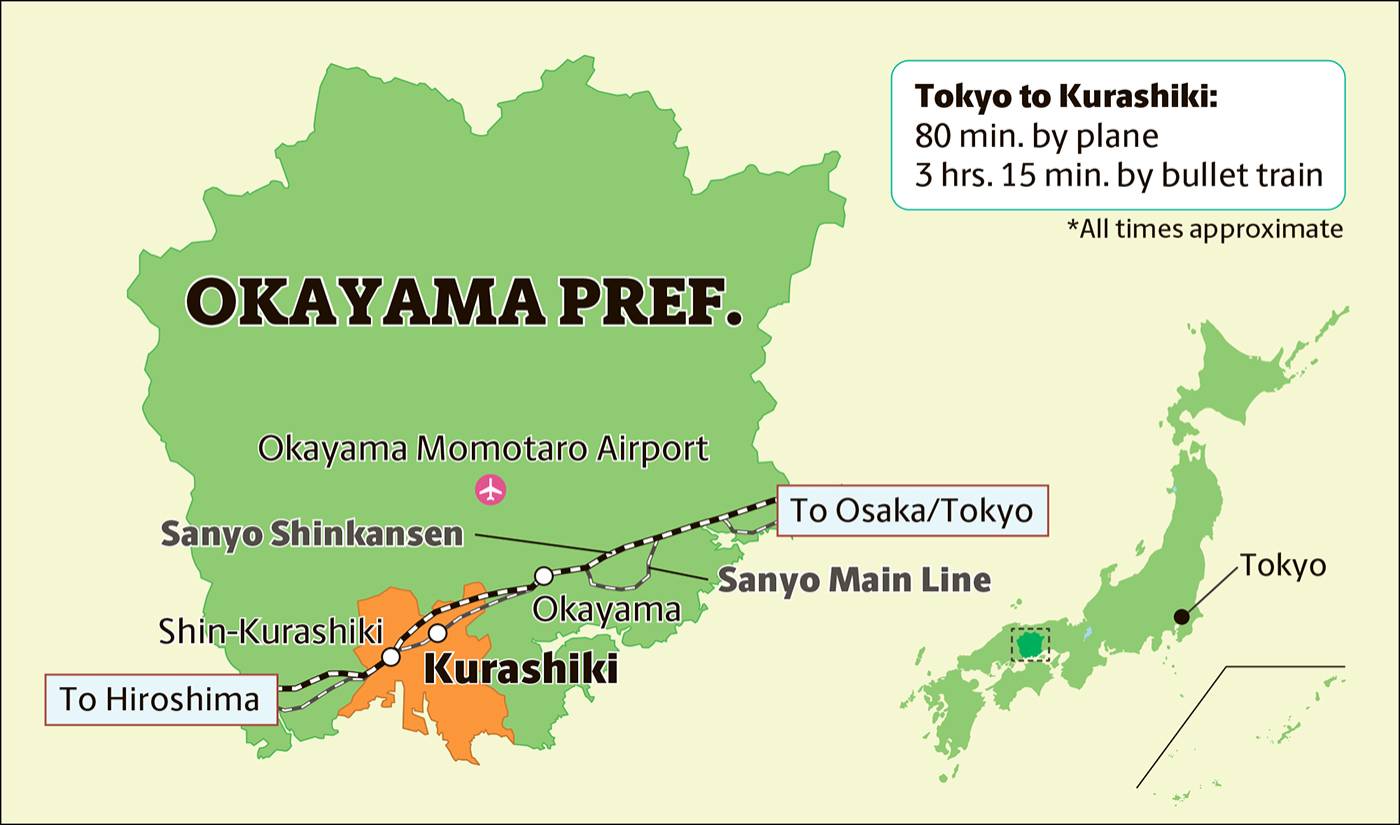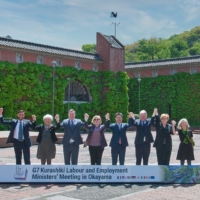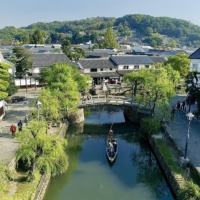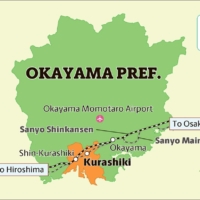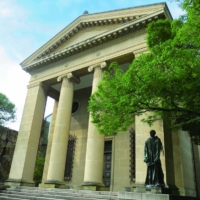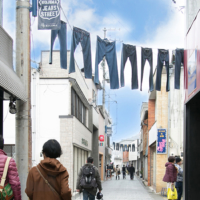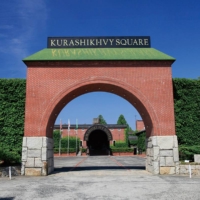In hosting the April 22 and 23 Labour and Employment Ministers’ Meeting ahead of the G7 Summit in Hiroshima, Kurashiki in Okayama Prefecture has secured its place as a first-class MICE destination.
MICE, which stands for “meetings, incentives, conferences and exhibitions,” is another way of referring to the events industry that brings together professionals from every possible field and facilitates discussions to foster collaboration. Kurashiki is uniquely suited for that, thanks to its picturesque scenery, an industrial background and a wide variety of regional resources. Here are a few examples of what visitors can expect.
Embracing old and new
This was the second G7 ministerial meeting to be held in Kurashiki, the first being during the 2016 summit in Ise-Shima. As before, it took place in the Kurashiki Bikan Historical Area, primarily at the Kurashiki Ivy Square complex.
Ivy Square is part of Kurashiki’s cultural and industrial heritage dating back to the Edo Period (1603 to 1868). Site of one of the first modern cotton mills in Japan, it earned its name as the outer walls were covered by ivy plants to lower temperatures and improve working conditions inside. The mill’s second president, Magosaburo Ohara, was also the founder of the Ohara Memorial Institute for Science of Labour, which researches occupational health. While today’s Ivy Square may be a multipurpose facility with a hotel and restaurants, its history lent the perfect atmosphere to the April meeting on the topics of labor and employment.
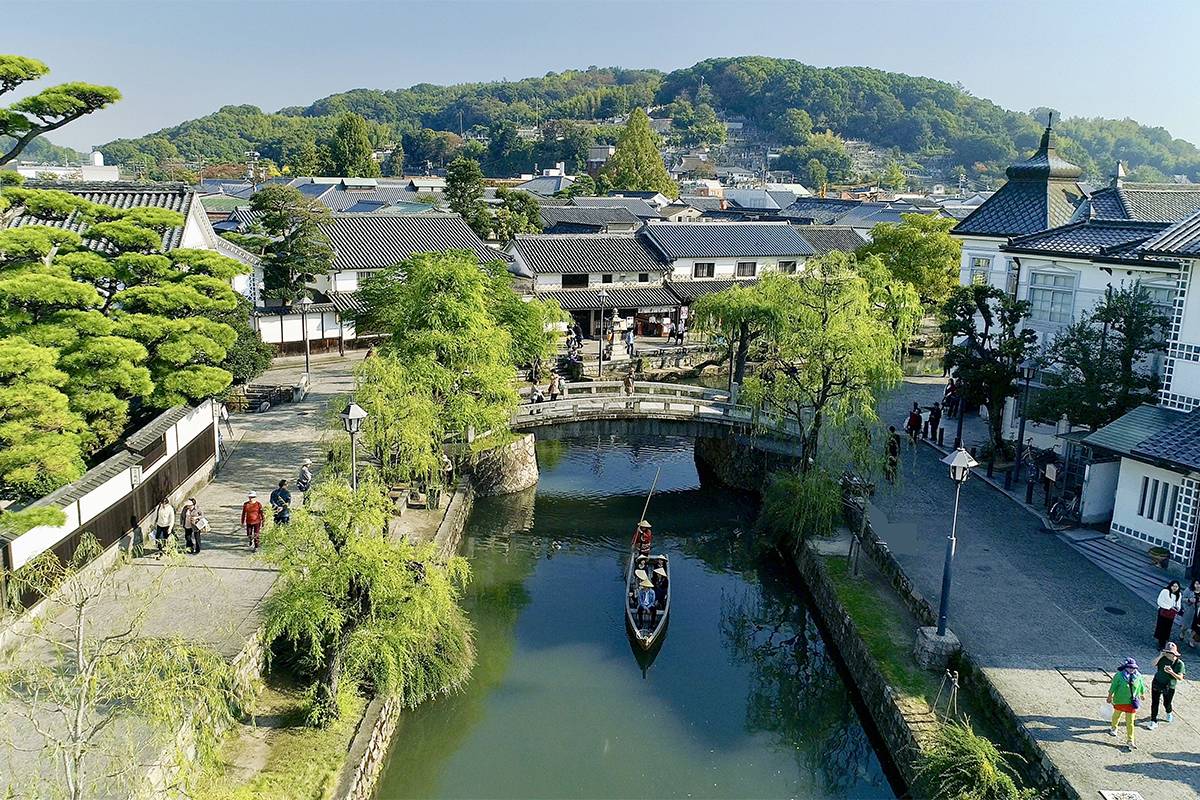
Of course, the Bikan Historical Area is much more than a historically significant MICE venue. Nor is it just a picturesque townscape along the Kurashiki River. Rather, it’s a symbol of the city’s enterprising spirit and the harmony between old and new best represented by its architecture, which weaves together traditional Japanese houses and Western buildings. It’s also a window into Japan’s past, with some sections of the area dating back more than 400 years, surviving to this day thanks to the preservation work of the city’s dedicated residents. In 2017, the Bikan Historical Area was recognized as a Japan Heritage Site and continues to be a big reason why over 3 million people visit annually. Some are undoubtedly also drawn to the area’s Kurashiki Archaeological Museum. Housed in a 200-year-old rice granary, the museum exhibits millennia-old items that shed light on the development of Okayama and parts of Hiroshima.
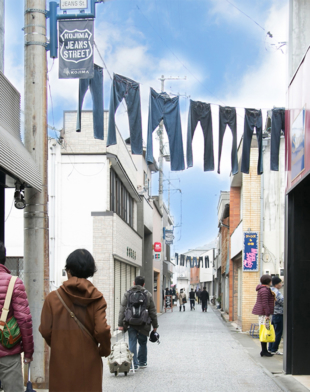
However, not all of the city’s charms are confined to the past. Some may have started there but now actively contribute to its growth and prosperity, like the local jeans industry. In fact, the history of Japan’s domestic jeans production starts in Kurashiki, specifically in the Kojima district, now home to the 400-meter-long Kojima Jeans Street and about 40 jeans stores. Every spring, a festival under the theme “Made in Kojima” is held here, attracting as many as 200,000 visitors. Travelers can also visit the Betty Smith Jeans Museum, the first and only museum of its kind in the country. How did Kojima become Kurashiki’s “Denim Valley?” Four centuries ago, large parts of the city were reclaimed from the sea, but the resulting land was too saline to grow rice. It was, however, perfect for growing cotton, so over time, Kurashiki grew into one of the biggest textile production areas in Japan. Besides jeans, they’re also famous for their tabi (traditional split-toed socks) and school uniforms.
Something for everyone
Located in the Bikan Historical Area, the Ohara Museum of Art is the first private museum devoted to Western art in Japan. In the beginning, it was mainly dedicated to one person: Torajiro Kojima, a Western-style painter and close friend of Ohara, who founded the museum in 1930 to honor Kojima’s works. With Ohara’s encouragement, Kojima worked on his own pieces while traveling through Europe and collecting the many masterpieces that would eventually become part of the museum’s collection.
Today it includes works by such giants of the art world as El Greco, Monet, Rodin, Matisse, Gauguin, Renoir, Lautrec, Cezanne, Chagall, Degas, Manet, Millet, Munch, Picasso and Rousseau.
According to some sources, the museum’s priceless exhibits were the reason why Kurashiki was spared from air raids during World War II. Thanks to this, guests today can enjoy the facility’s Craft Art Gallery and Asian Art Gallery, which was converted from a rice warehouse and exhibits Asian antiques, or the Main Gallery, which mainly shows Western art, including Monet’s famous “Water Lilies” and El Greco’s “Annunciation.” Special private tours are available for large groups — ideal as an attractive after-convention activity.
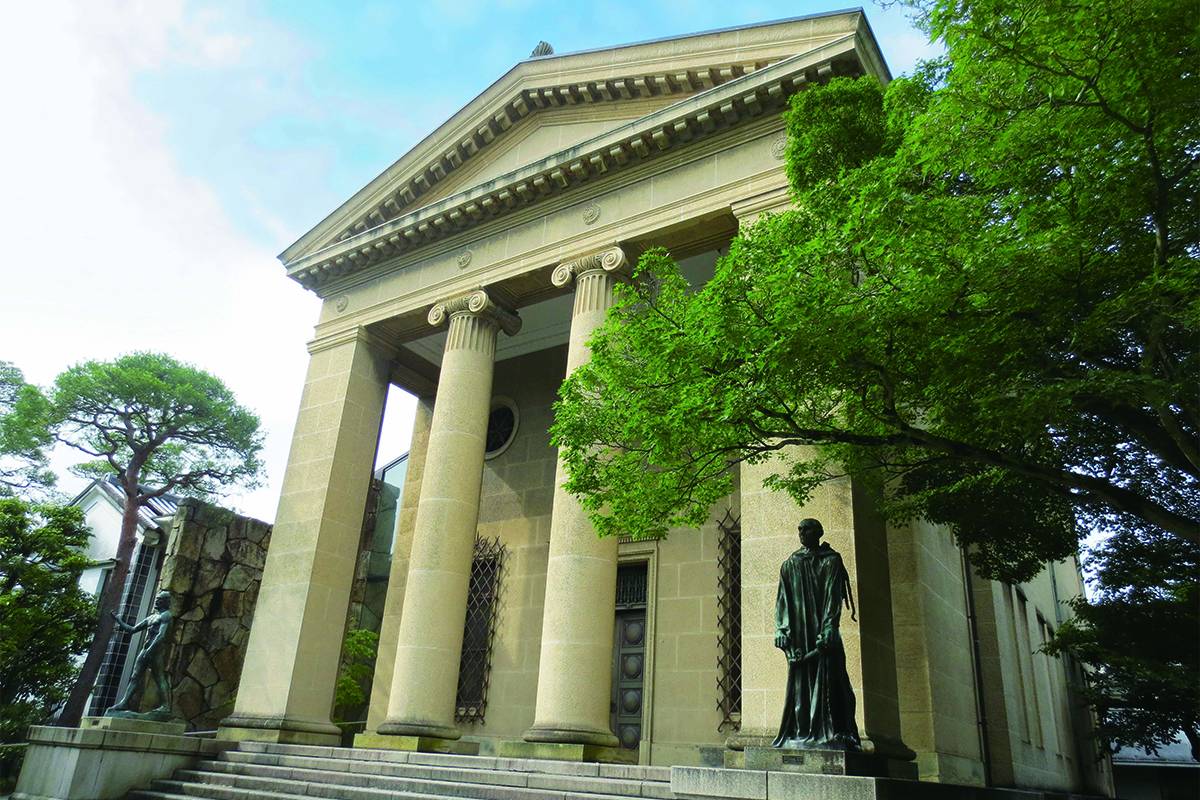
Those looking for beautiful sights outdoors should consider the Setonaikai National Park. Established in 1934, it is Japan’s first national park and one that has since expanded to include parts of 11 prefectures. However, Kurashiki has the privilege of being home to scenic Washuzan Hill, from which visitors can enjoy one of the “100 most beautiful sunsets in Japan” over the tranquil Seto Inland Sea. Washu literally translates to “eagle wings,” since the mountain is said to resemble a majestic bird taking flight. Before the COVID-19 pandemic, the area attracted about 1.3 million people a year (about 400,000 in 2021), some of whom were probably visiting to also get a look at the Seto Ohashi Bridge. Opened in 1988, the 13-kilometer engineering marvel is actually made up of six bridges connecting Kurashiki with Sakaide in Kagawa Prefecture. It was recognized in 2015 by Guinness World Records as the world’s longest combined rail and road bridge, as it carries train lines beneath its upper expressway.
Finally, for travelers looking for a feast of the gastronomical variety, there are many unique Kurashiki dishes featuring the bounty of Okayama and the Seto Inland Sea. Kakushi-zushi, for example, is a sushi dish easily found around the Bikan Historical Area and consisting of a box that seemingly only includes rice with simple toppings. But once flipped and opened, the box reveals a beautiful and appetizing arrangement of raw fish and other ingredients that were hiding underneath. Kakushi-zushi was apparently inspired by Ikeda Mitsumasa, the 17th century lord of the Okayama domain, who encouraged frugality by proclaiming that people should consume single-dish dinners. Indeed, before the flip, kakushi-zushi does look like a simple rice dish. To not appear suspicious, people reportedly consumed the secret sushi with soup to explain why they felt so full after the seemingly humble meal.
For a once-in-a-lifetime encounter with Japanese history, industrial spirit and majestic natural wonders, Kurashiki awaits.
This page is sponsored by the Kurashiki Municipal Government.



